Rayonier foresters spend more time planting trees than they do harvesting them. We look at the extensive planning and location-specific methods we use for planting trees in the U.S. Pacific Northwest, the U.S. South and New Zealand.
With logs rushing to meet the needs of today’s consumers, do you ever find yourself asking, “Are we going to run out of trees?”
Believe it or not, sustainable forestry companies like Rayonier plant many times more trees than we harvest. In the typical year, Rayonier foresters put more than 30 million trees in the ground. We reforest most areas we cut within two years of the harvest. The trees we plant will provide for the next generation.
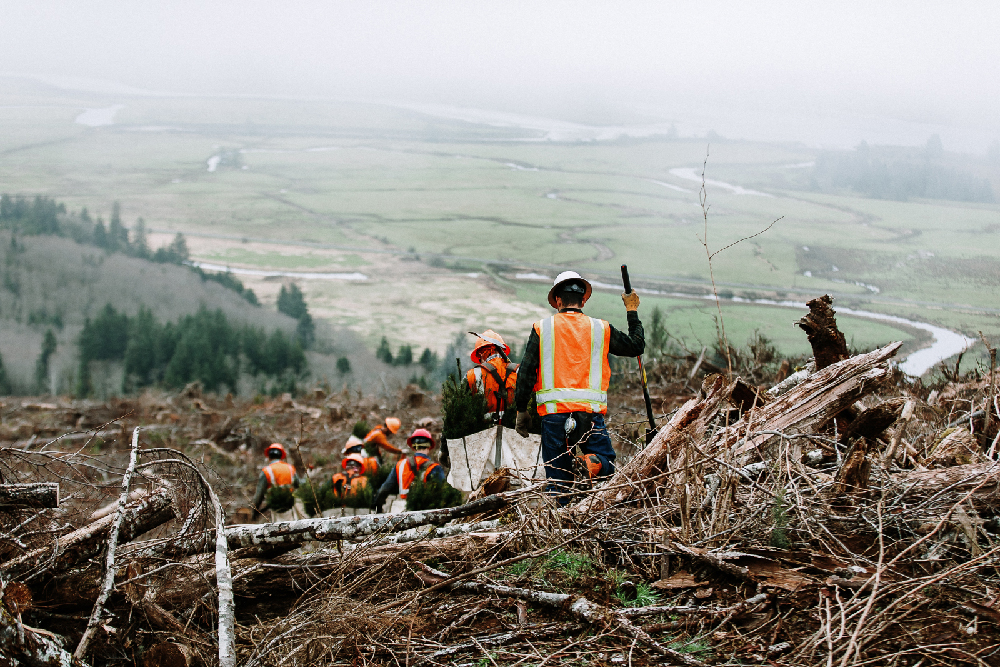
It’s not just a simple process of dropping seeds and leaving them alone for decades. It takes years to plan each planting operation. We combine everything we know about genetics, agriculture and soils. We also consider the unique conditions of each region where we plant to help each forest thrive.
For this story, planting teams in three different parts of our ownership, the U.S. South, the U.S. Pacific Northwest and New Zealand, explain how we plant trees in each of those regions.
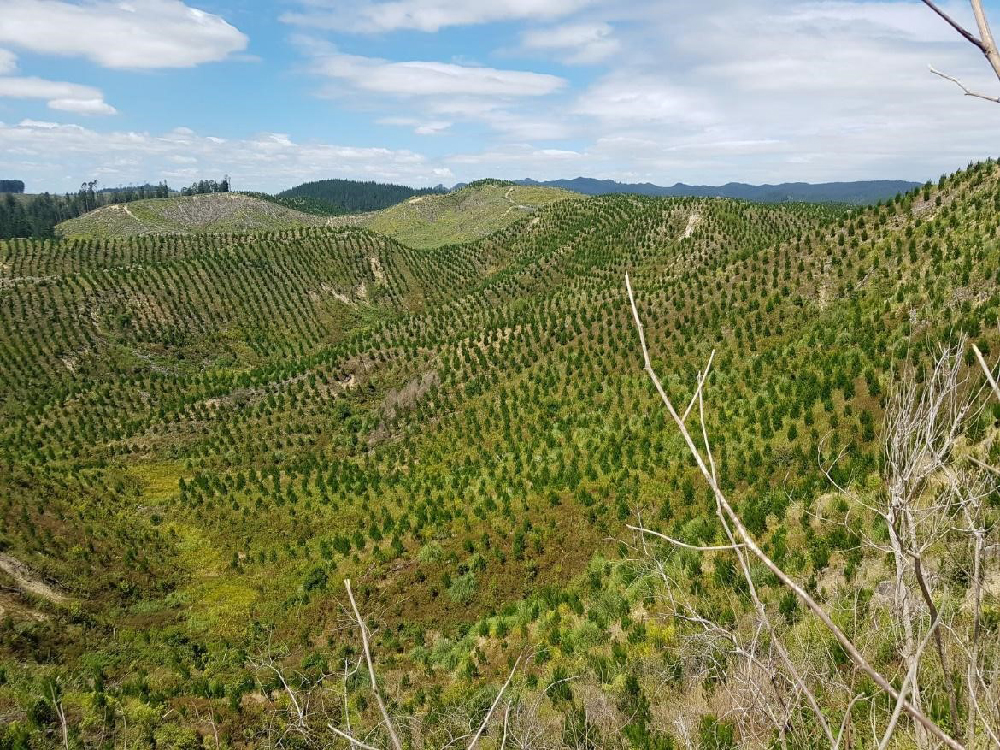
Planting forests over a lifetime
Imagine working as a farmer, but rarely being able to harvest the crops you plant. You nurture them every day, but it will be for another generation to actually gather the fruits of your labor.
That is the work of a forester. They plant trees knowing they will grow for decades before it’s time to cut them.
On rare occasions, a longtime forester may see the process from start to finish. Dan Hildebrand, a Rayonier resource land manager who’s been with our company more than 30 years, has done it. He harvested the same trees he planted many years prior. Then he replanted that same field again.
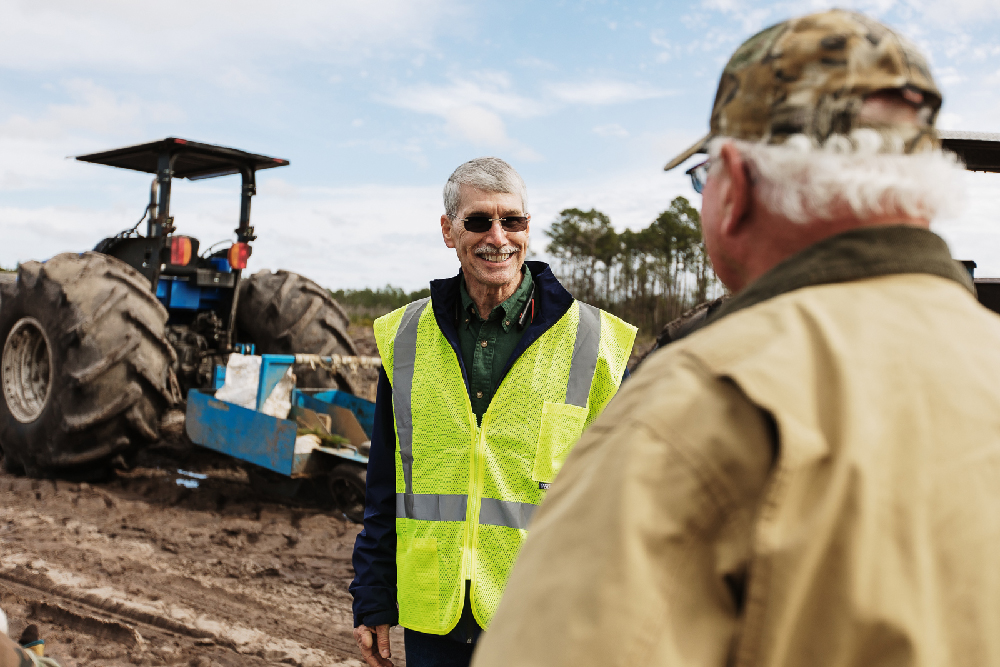
How to plant trees in the U.S. Southeast
During a recent planting operation near Jesup, Georgia, Dan climbed aboard a refrigerated van. He checks it each day to ensure his loblolly pine seedlings inside are nice and cool.
The van, powered by a diesel engine, maintains a 37 degrees Fahrenheit temperature to ensure the trees stay dormant. Warmth might signal that it’s time to grow. This would stress the trees unnecessarily in the already stressful transition from our nursery to the forest.
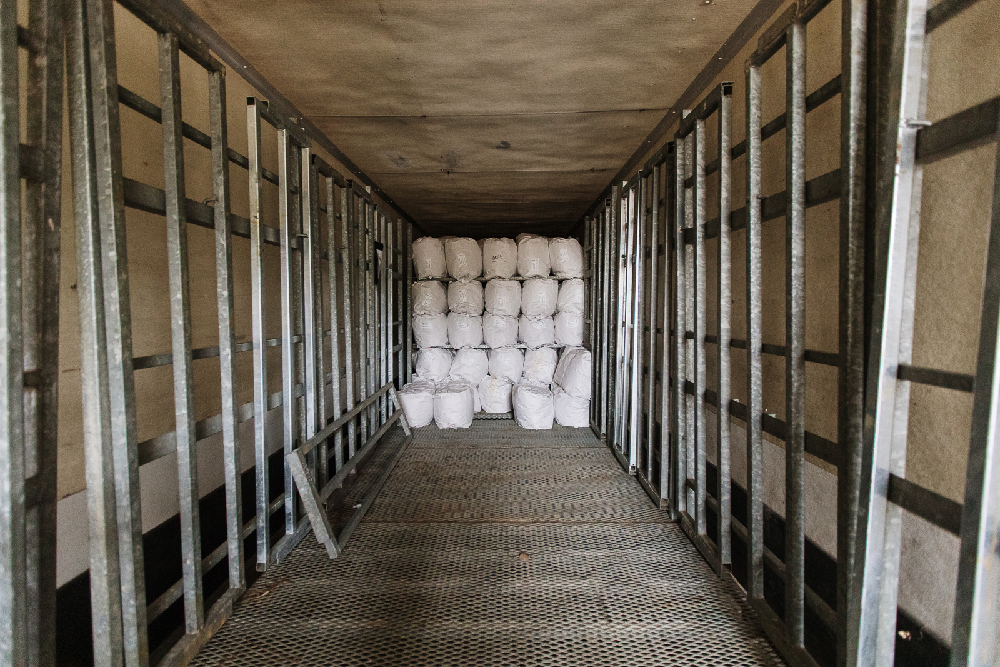
Planting trees in the coldest months
The goal is to plant all the trees in the coldest winter months, November through February. That ensures the roots have time to become established in the ground before the seedlings begin to grow.
“We have about 475,000 trees per vanload,” Dan says. “We try to plant them all in about one week.”
While some parts of our ownership rely on outside nurseries to grow our seedlings for us, in the Southeast we use trees grown in our own seedling nursery in Elberta, Alabama. That region’s rich soils grow healthy rootstocks, giving the trees a great start.
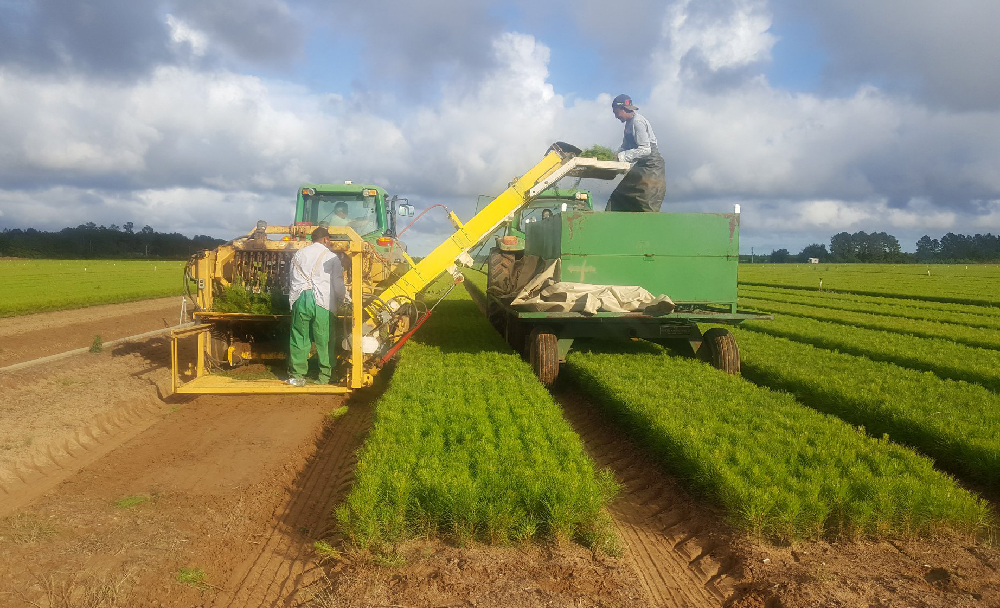
The seeds for these trees come from Rayonier seed orchards. We breed our best-performing trees in the orchards and harvest the seeds from their pine cones.
Site prep keeps trees dry in rainy months
Out in the forests Dan’s crews are replanting, all the “site prep” work has already been done to prepare the ground for planting. Since many of these properties are low-lying, we often row the soil into long, straight raised beds. That will ensure the trees are above the water table and don’t drown before they’re established. Thanks to GPS on the tractors, the rows are perfectly straight and exactly the right distance apart to ensure the right spacing for the trees.
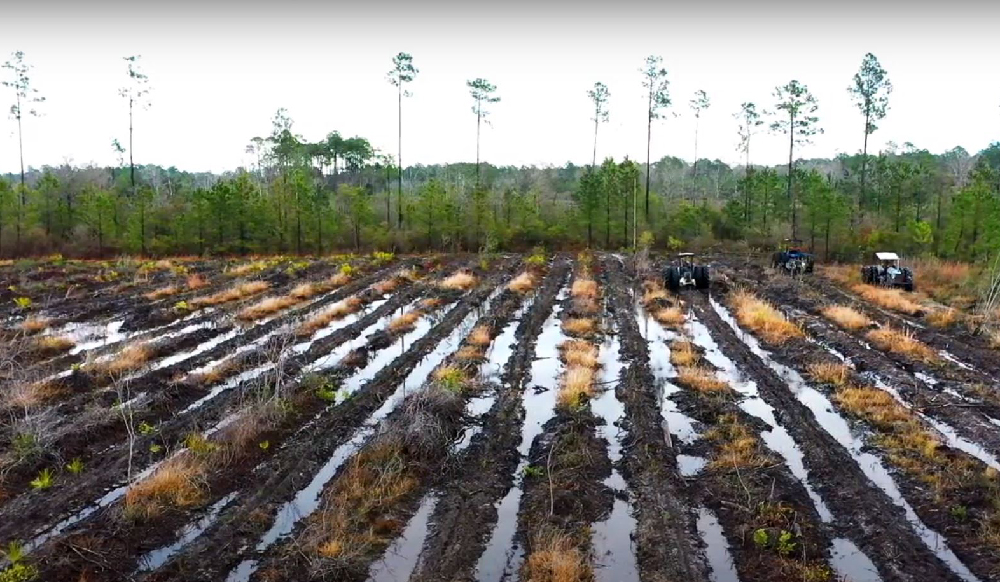
Throughout the day, Dan checks on various planting crews, each of whom will plant thousands of trees per-day. They use a tractor to pull a “hopper” through the planting area, and a person sitting in the hopper drops the seedling in the ground at just the right moment.
“In the front is a 36-inch, knife-like disk that looks like a pizza cutter,” Dan explains. “It cuts a narrow slot in the ground. You drop the tree in the slot, and then the wheels on the back of the hopper packs the slot back together.”
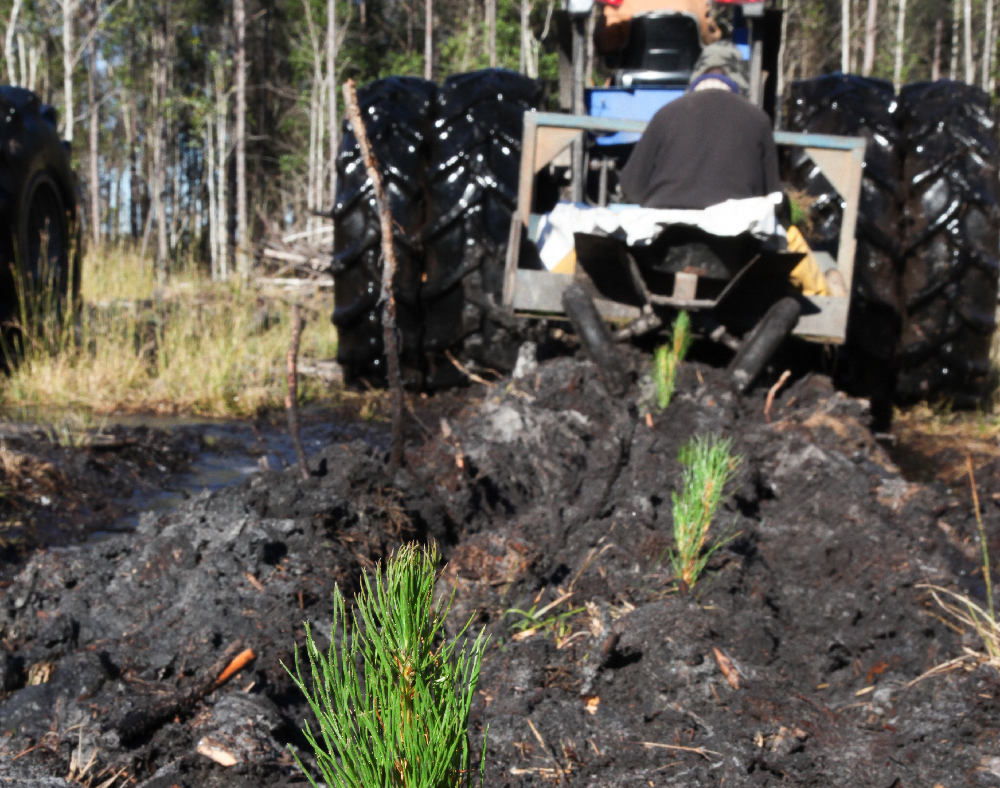
Dan says the planters use a “cadence,” planting every two or three seconds to ensure each tree is 5 feet apart. The spacing will ensure even growing conditions, similar to how one would plant a garden.
Ensuring the trees are planted right
Dan walks the field and performs what our foresters call “an audit.” He checks the trees to ensure they’re being planted deep enough, giving a gentle tug on their tops. He makes sure the roots are planted straight down and the stems haven’t been handled too roughly.
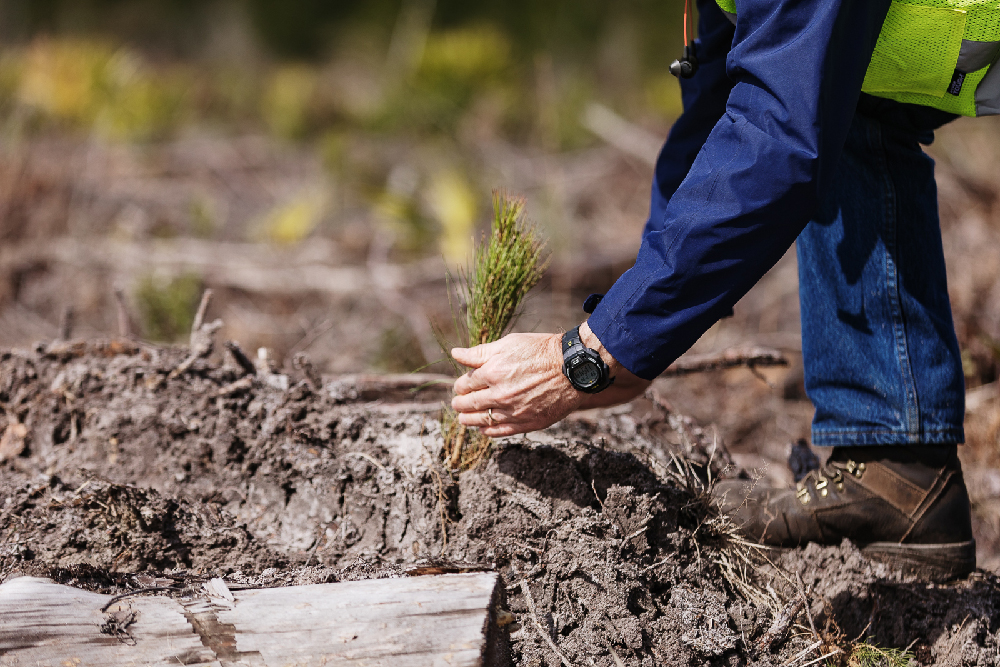
Since all trees are primarily alive only in their outer cambium layer, Dan explains, “The live part of this 1-year-old tree is thinner than a piece of paper. It has to be planted deep in the soil to stay protected.”
Once they’re in the ground, these trees will be under a careful forest management plan for the next two decades. They will receive fertilizer treatments, competing weeds will be removed, and, in about 12 years, the weakest of the trees will be thinned out and used for pulp products like toilet paper, cardboard and paper.
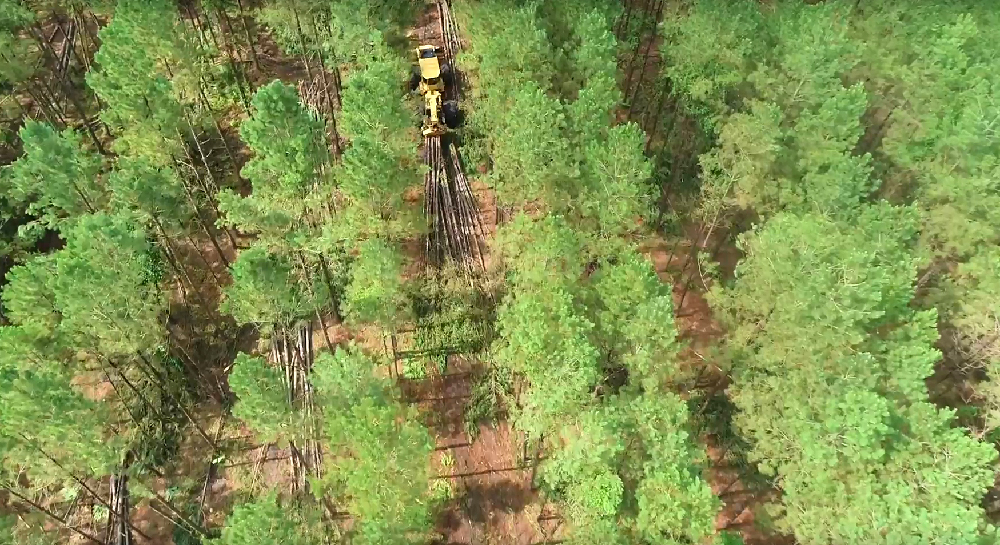
Somewhere between 18 and 25 years from now, the remaining trees will be harvested for products such as lumber and fencing. It’s a long time, but as you’ll see, in other areas, our trees grow twice as long.
How to plant tress in the U.S. Pacific Northwest
Our planting operations in the Pacific Northwest are done with entirely different trees, methods and terrain. Near the small Washington town of South Bend, David Springe pulls on a jacket to fend off the chilly weather.
Out here, the cold Washington air is just right to keep our Douglas-fir seedlings dormant.
David, a resource land manager for our Hoquiam team, picks up a seedling and admires its root system.
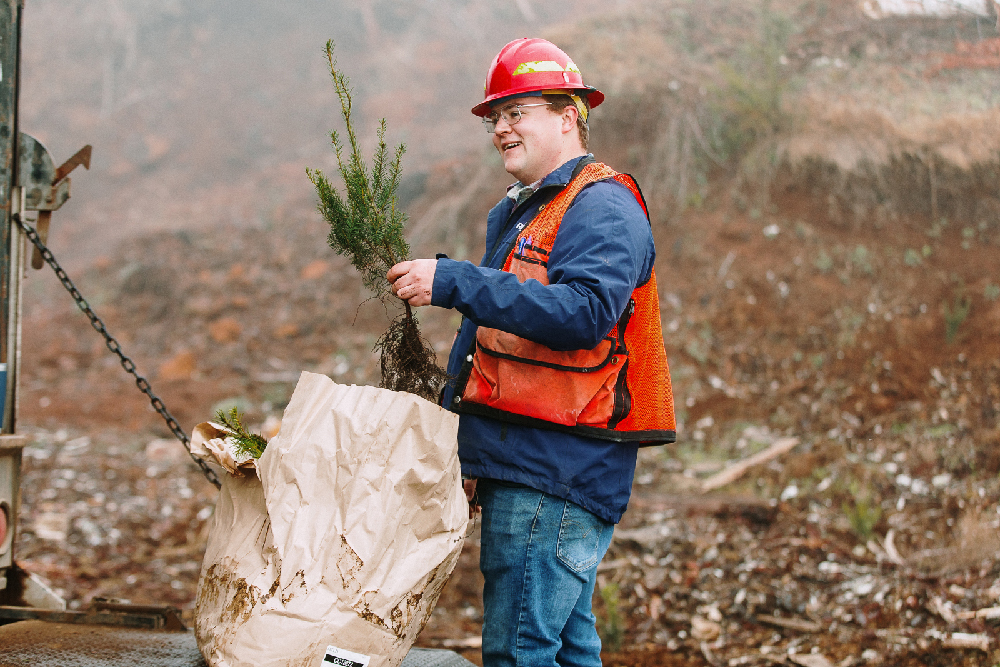
“This has a good root to shoot ratio,” he says, explaining a tree should have a generous amount of roots for the amount of green “shoot” coming out of the ground.
While our trees in the Southeast were only about a year old at planting time, here they grow an extra year in the nursery, reaching their second birthday before they’re replanted to ensure they’re about two feet tall before they’re exposed to the infamously rainy weather of the Washington mountains.
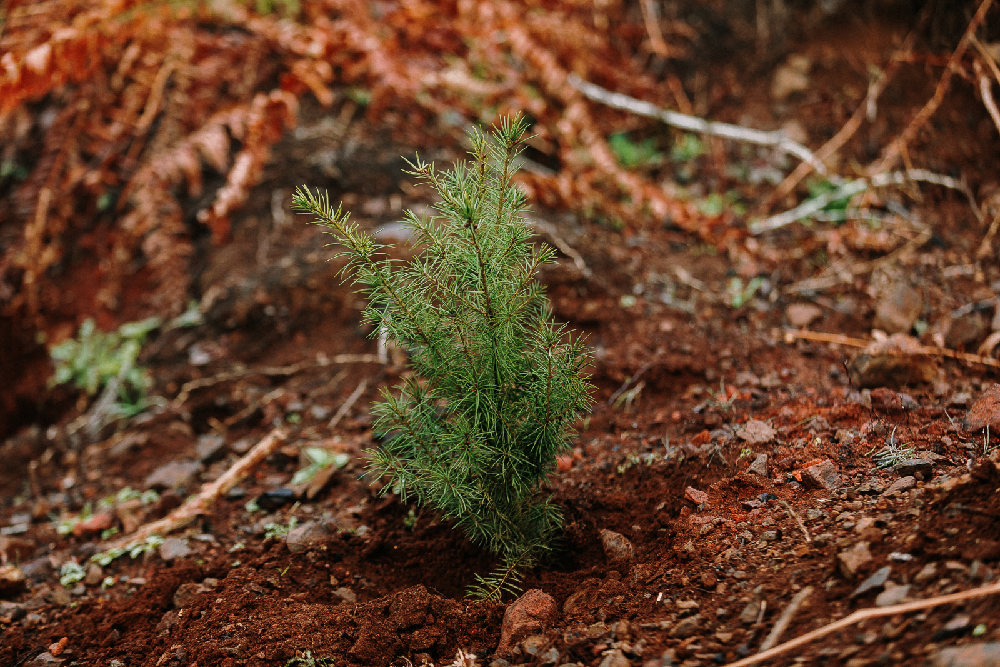
Leaving stumps and branches on the ground
While we plow neat rows in the South, here in Washington we leave most stumps and tree debris (known as “slash” to the locals) on the ground after the previous forest is harvested. That will help hold the soils in place, preventing erosion on the steep slopes and keeping sediment out of waterways below. It conserves the organic matter and nutrients within the soils. And, as the slash breaks down, it will also serve as a natural, slow-release fertilizer for the trees we plant today.
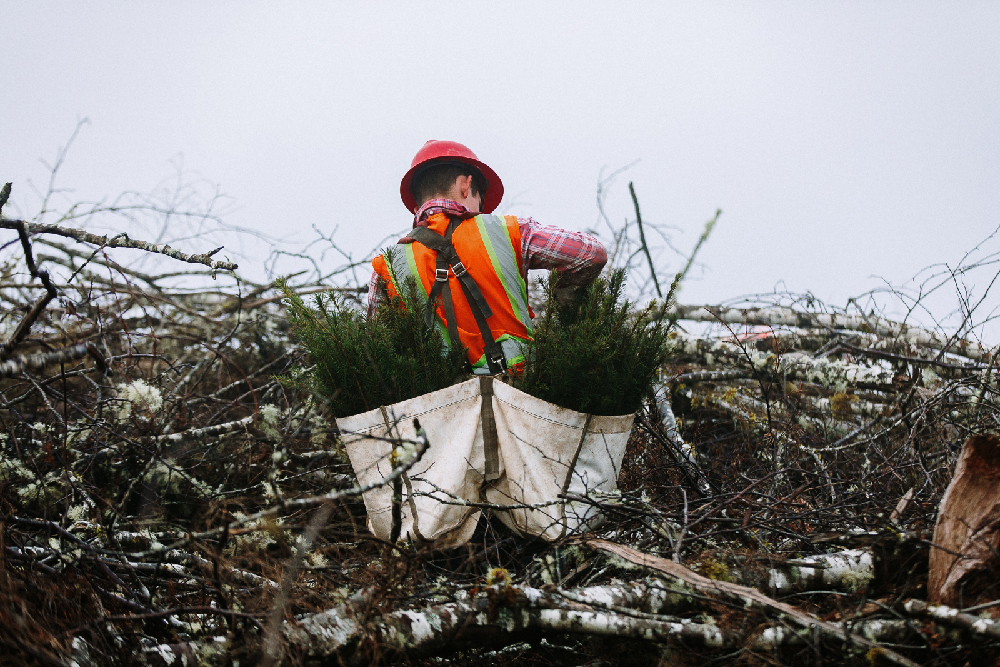
Planting each tree by hand
With steep slopes and rough terrain, these forests aren’t planted using tractors or other heavy equipment. Out here, each tree is planted by hand and shovel.
While the work isn’t easy, experienced planters can put more than 1,000 trees per-person in the ground in a single day. Just like the tractor planters in the Southeast, these planters develop a rhythm that keeps them planting at a steady pace while they’re evenly spaced apart from one another.
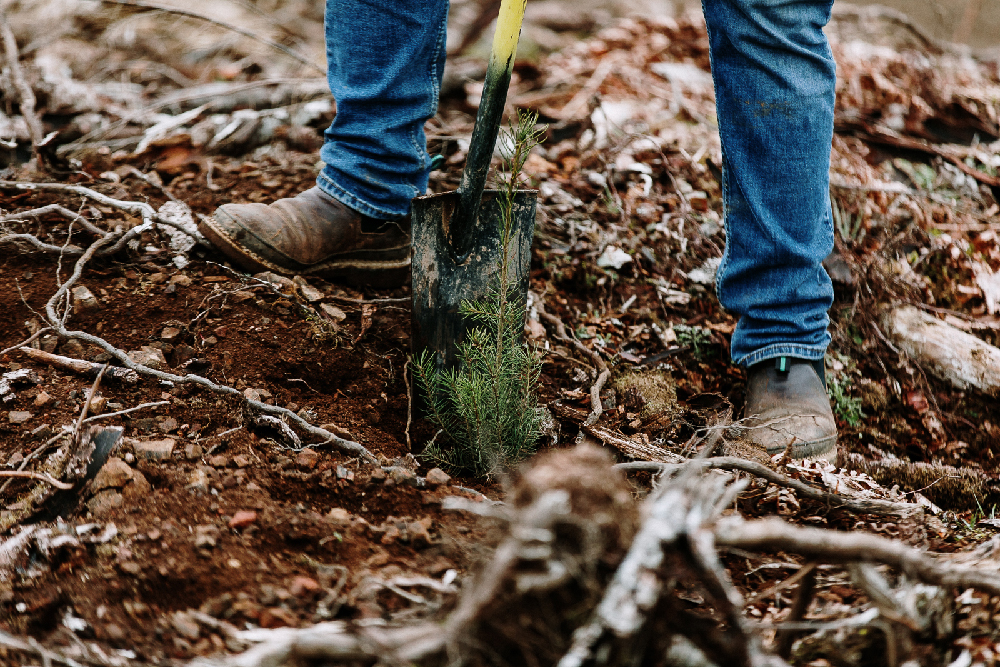
“They dig a hole by stomping on their shovel and wrenching it back and forth, which loosens the soil. Then they place the seedling with the roots hanging straight down and use the shovel to push the soil back in,” David explains.
Each person on the planting crew wears two bags loaded with trees: the pair weighs about 40 lbs. when full.
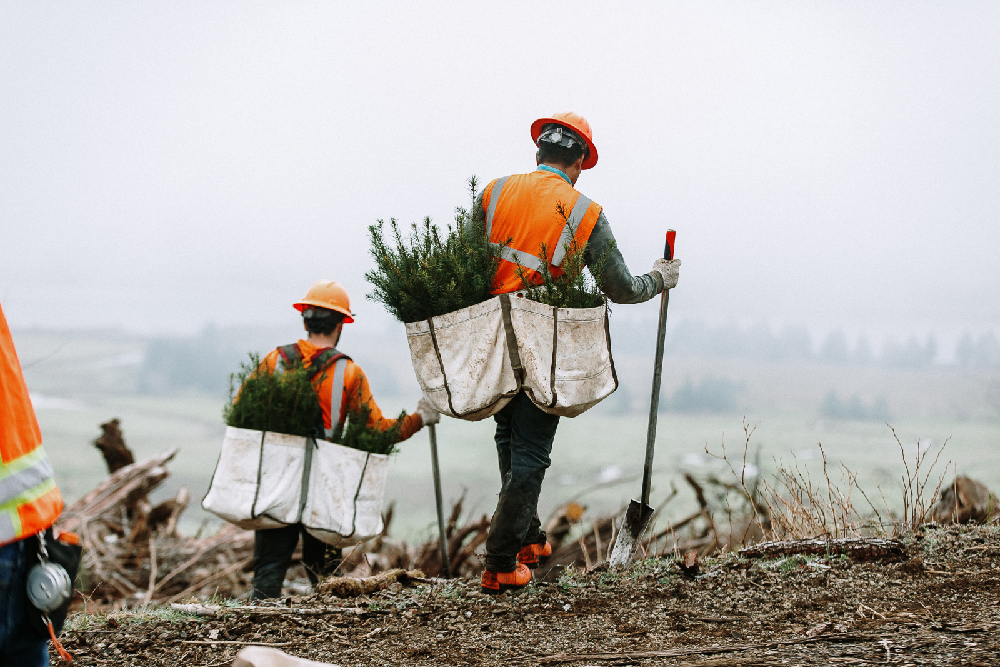
Watching as a crew planted across a picturesque hillside, David said, “They’re choosing the best location to dig every hole. It’s one of the most important decisions made in each of these trees’ lifetimes.”
The typical forest in the Pacific Northwest will grow Douglas-firs about 40 years before they’re harvested.
How to plant trees in New Zealand
Our New Zealand team, Rayonier | Matariki Forests, also plants primarily on steep terrain, so hand-planting is the most common method. Seedlings come from a number of independent nurseries who work closely with us.
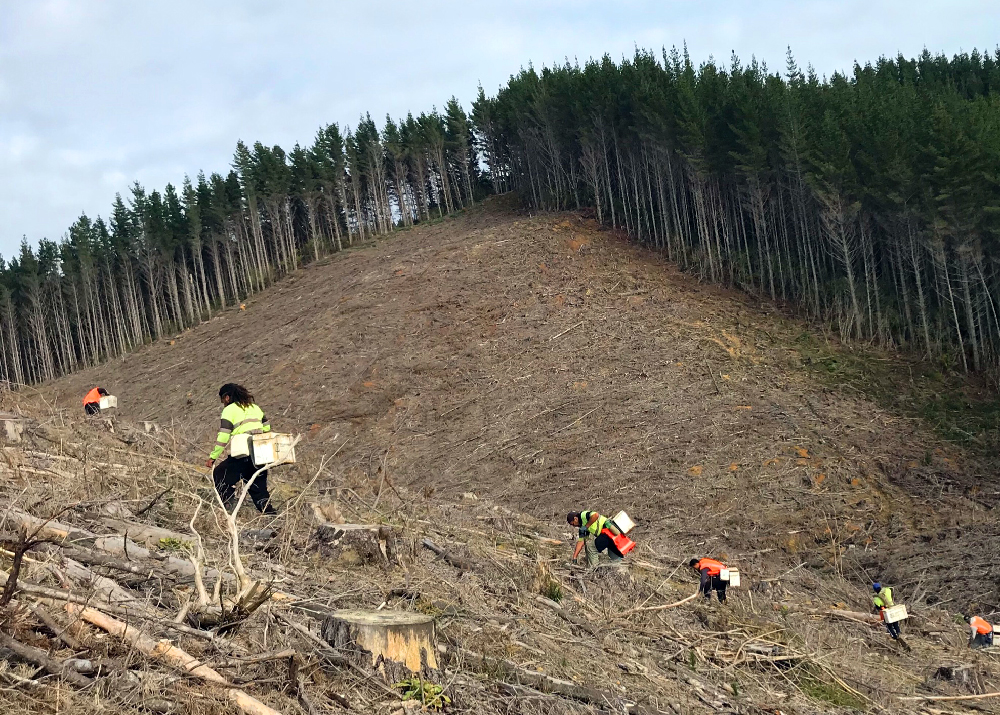
“I enjoy working with the tree breeders, seed producers and nursery growers to deliver treestocks that are ‘fit for purpose’ for our field sites, silviculture and target wood products,” says Forest Estate Manager Paul Adams. “Nurseries are like ‘mini’ plantations, and each year they produce treestocks that are the start of the next age class of productive, high-quality forests across our estate.”
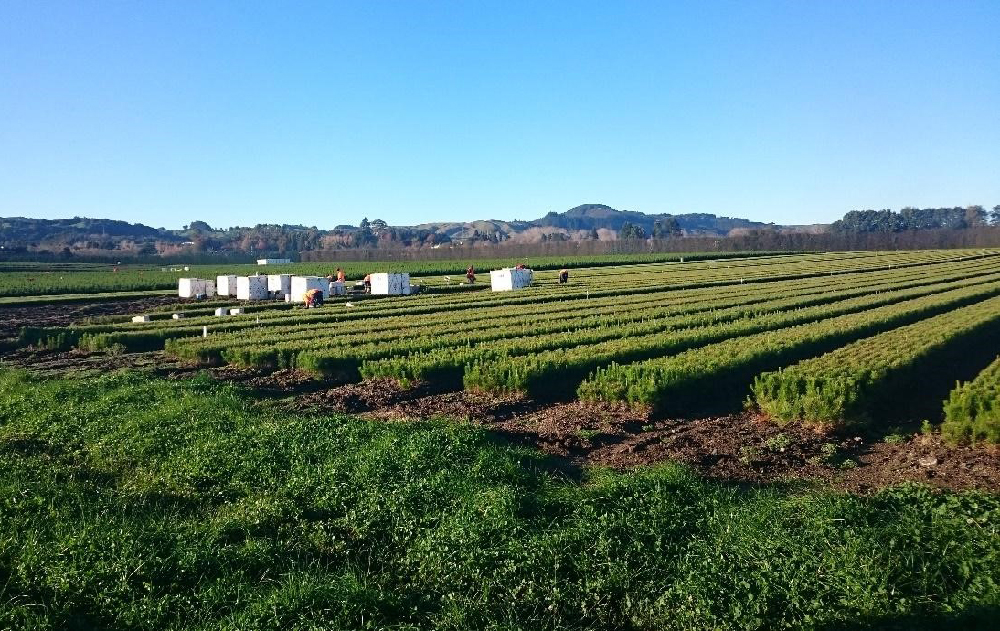
Delivering Seedlings with Care
The team has a carefully-planned process to deliver seedlings to the forest in the best possible condition.
“Many of our regions are able to plant tree stocks within 24 to 48 hours of lifting. There are generally daily deliveries of stock from the nursery to planting sites using a pod system to reduce compression of stock from boxes stored on boxes,” Paul explains.
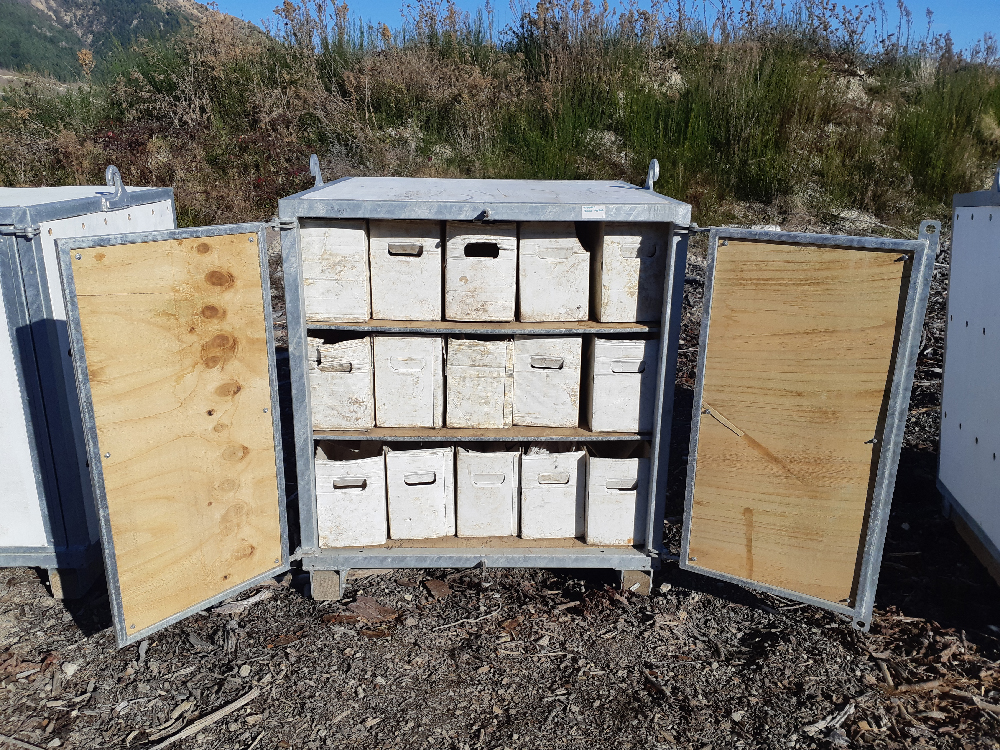
“These boxes are then carried in the field, commonly on a belt around the planter’s waist. The seedlings are taken directly from the box and planted in each planting hole.”
The work is undeniably challenging.
“Hand planting can be a difficult job due to the terrain, weather conditions and the physicality of the work,” says Forest Estate Manager Paul Adams. “It can take two to three years before a planter is proficient.”
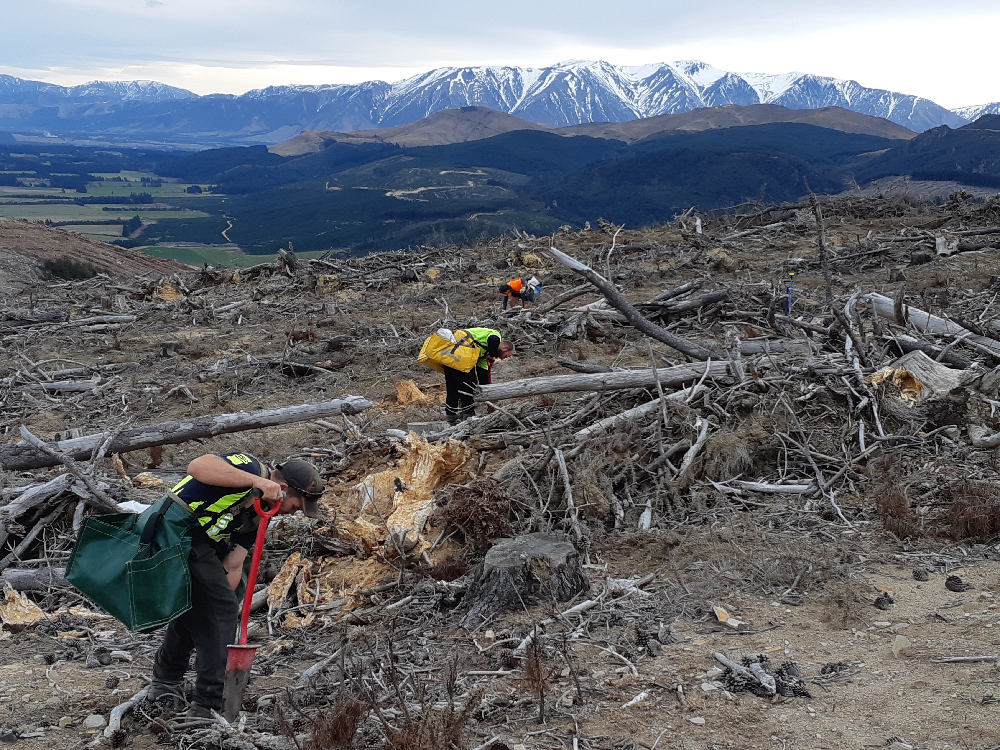
Planters hard to find
While the scenery is beautiful and the work is consistent throughout the winter, it is becoming increasingly difficult to find enough planters to keep up with the demand. The New Zealand team is looking closely at advancing technology in the hopes that there will one day be efficient mechanical methods to assist with planting efforts. But, for now, there is nothing better than hand-planting.
With the coldest weather coming at the opposite time of year versus the United States, in New Zealand the prime time to plant is from mid-May to early August. The New Zealand team plants mostly radiata pine, some Douglas-fir and—on high altitude sites—some pine hybrids.
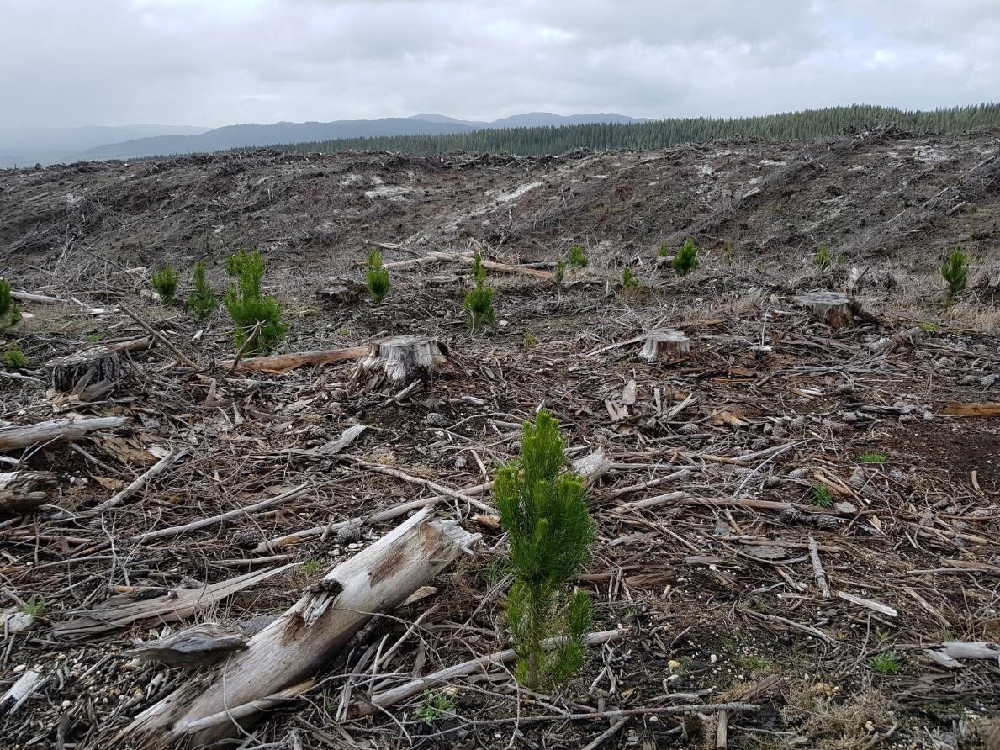
At times, the team is able to plant without having to prepare the ground beforehand, like our Pacific Northwest team. Other times, there is so much tree “residue” left behind that it would be too difficult to plant on. In those instances, the team uses mechanical site preparation. They collect the “residues” from the previous harvest into windrows, or “heaps.” If soils are compacted so much that they will limit tree growth, then ripping or mounding may be undertaken. In frost-prone areas, the team uses “spot mounding” to plant seedlings above ground level, where it will be warmer.
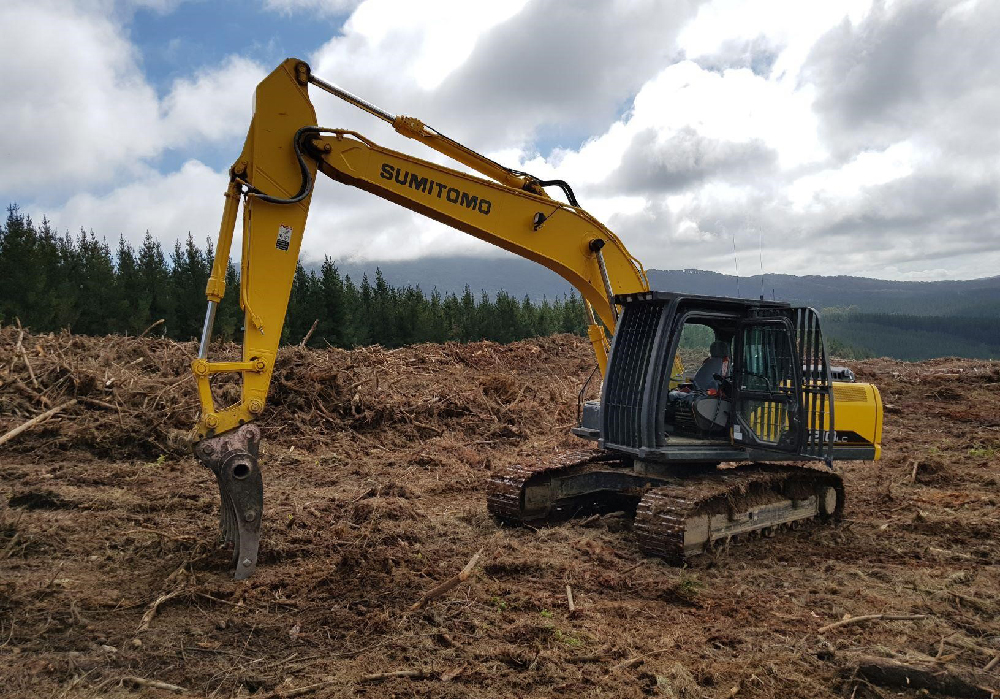
Taking pride in the trees we plant
Our foresters take pride in the trees they have planted. They’re contributing to the forests’ lifecycle, the health of the environment now and the needs of generations to come. Just ride along with one of them through the forest, and they’ll point out each stand they remember planting.
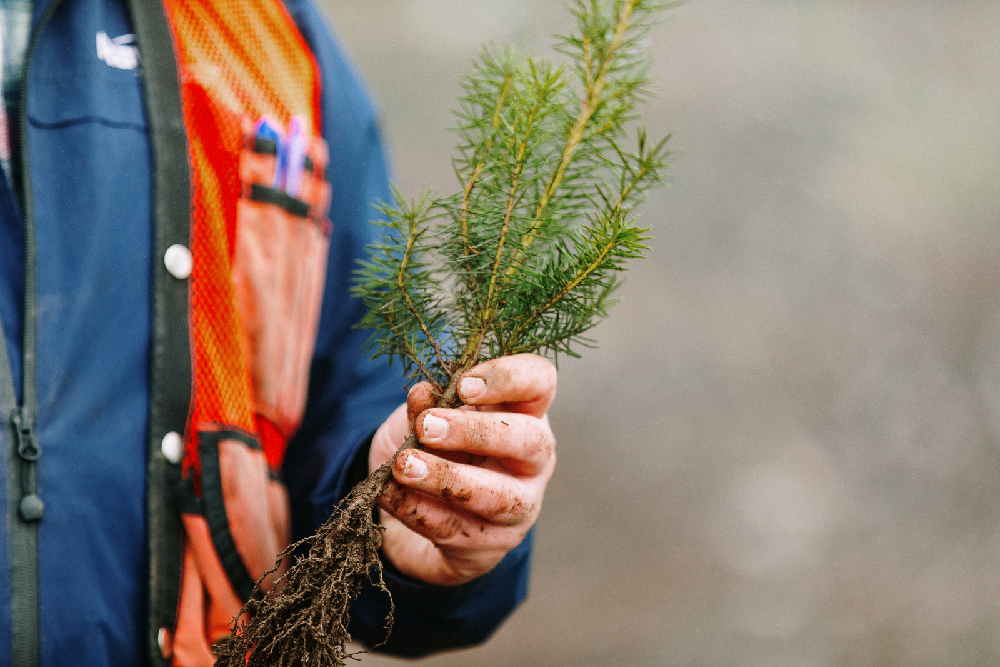
For Dan, there are many, many forests in the Southeast that he had a hand in planting.
“These trees will be used by my children and my grandchildren and their children,” he says.
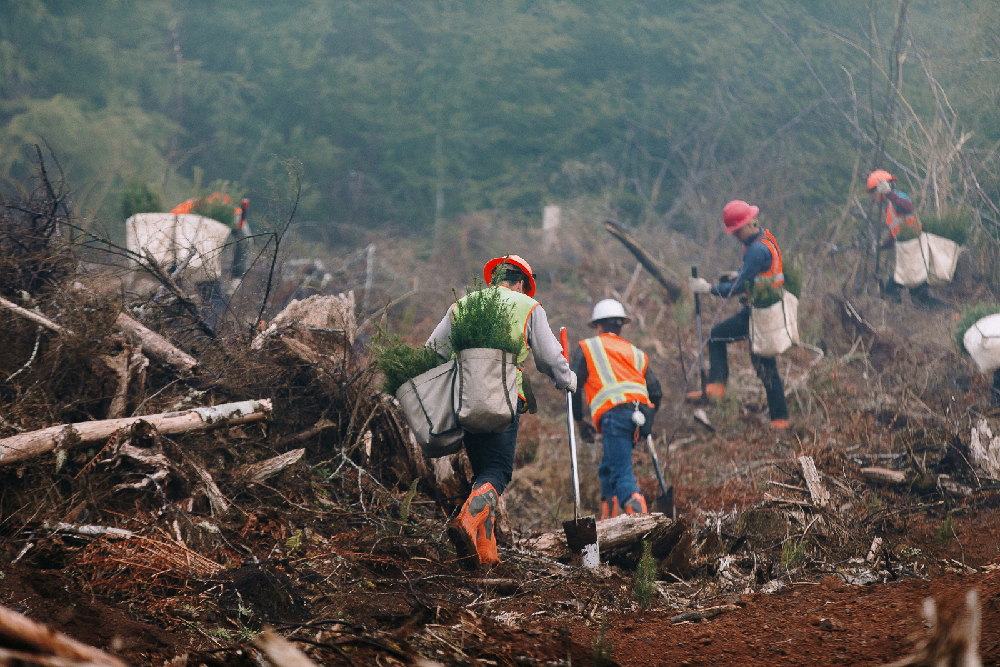
To Learn More about our planting process:
Read our article, How Foresters Use Controlled Pollination to Improve Tree Performance, to learn more about our genetic breeding process.
Watch our video, Planting and Lifting Seedlings at Rayonier’s Tree Nursery, to learn more about our pine tree nursery.
See a timeline and videos about all the steps of a tree’s life in the forest on our Lifecycle of a Forest web page.





Join the Conversation
Outstanding presentation. I have learned much. And, Dan Hildebrand has been a close friend of mine since he first started with Rayonier at Fernandina. He is an exemplary gentleman in every aspect.
Thanks, Frances. Yes, Dan is absolutely exemplary. Rayonier has been very fortunate to have him on our team all these years!
Thanks for the information. It was really wonderful seeing the plantings
You’re welcome Dixie! Thanks for watching!